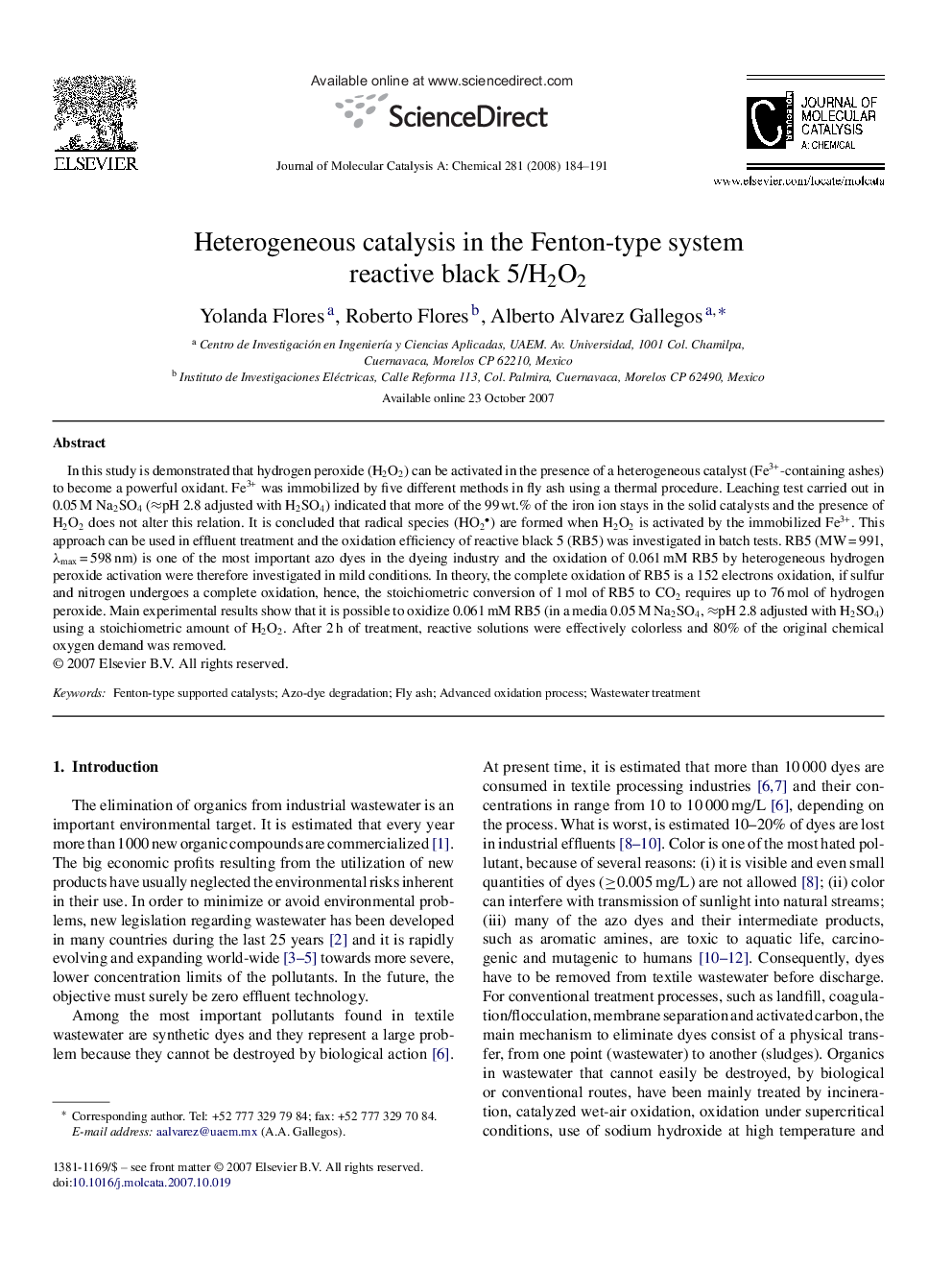| کد مقاله | کد نشریه | سال انتشار | مقاله انگلیسی | نسخه تمام متن |
|---|---|---|---|---|
| 68198 | 48506 | 2008 | 8 صفحه PDF | دانلود رایگان |

In this study is demonstrated that hydrogen peroxide (H2O2) can be activated in the presence of a heterogeneous catalyst (Fe3+-containing ashes) to become a powerful oxidant. Fe3+ was immobilized by five different methods in fly ash using a thermal procedure. Leaching test carried out in 0.05 M Na2SO4 (≈pH 2.8 adjusted with H2SO4) indicated that more of the 99 wt.% of the iron ion stays in the solid catalysts and the presence of H2O2 does not alter this relation. It is concluded that radical species (HO2) are formed when H2O2 is activated by the immobilized Fe3+. This approach can be used in effluent treatment and the oxidation efficiency of reactive black 5 (RB5) was investigated in batch tests. RB5 (MW = 991, λmax = 598 nm) is one of the most important azo dyes in the dyeing industry and the oxidation of 0.061 mM RB5 by heterogeneous hydrogen peroxide activation were therefore investigated in mild conditions. In theory, the complete oxidation of RB5 is a 152 electrons oxidation, if sulfur and nitrogen undergoes a complete oxidation, hence, the stoichiometric conversion of 1 mol of RB5 to CO2 requires up to 76 mol of hydrogen peroxide. Main experimental results show that it is possible to oxidize 0.061 mM RB5 (in a media 0.05 M Na2SO4, ≈pH 2.8 adjusted with H2SO4) using a stoichiometric amount of H2O2. After 2 h of treatment, reactive solutions were effectively colorless and 80% of the original chemical oxygen demand was removed.
In this study, hydrogen peroxide is activated in the presence of a heterogeneous catalyst (Fe3+-containing ashes) to become a powerful oxidant that destroys reactive black 5, one of the most important azo dye in the dyeing industry. After 2 h of treatment, reactive solutions were effectively colorless and 80% of the original chemical oxygen demand was removed.Figure optionsDownload as PowerPoint slide
Journal: Journal of Molecular Catalysis A: Chemical - Volume 281, Issues 1–2, 18 February 2008, Pages 184–191